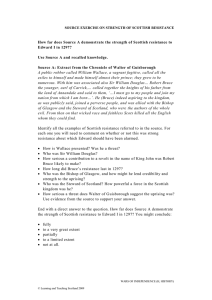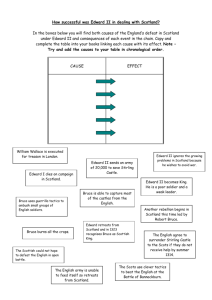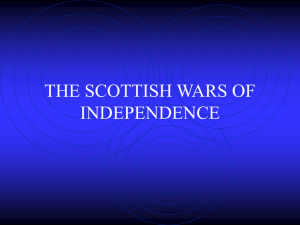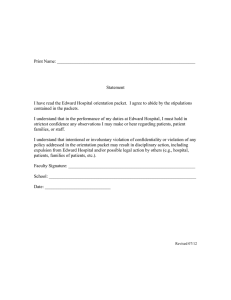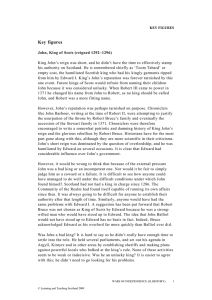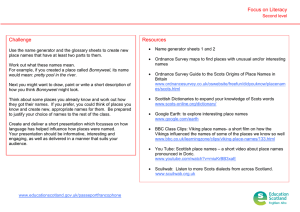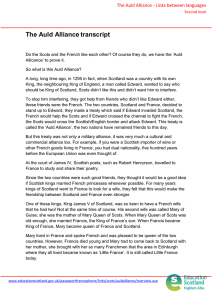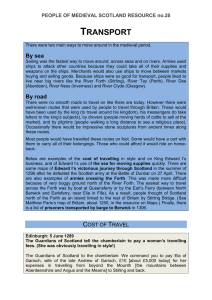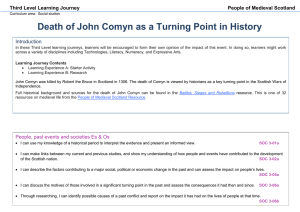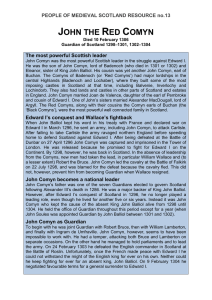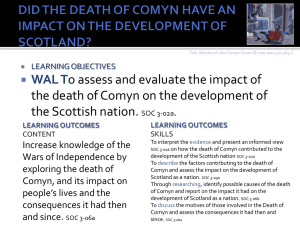Sample question
advertisement
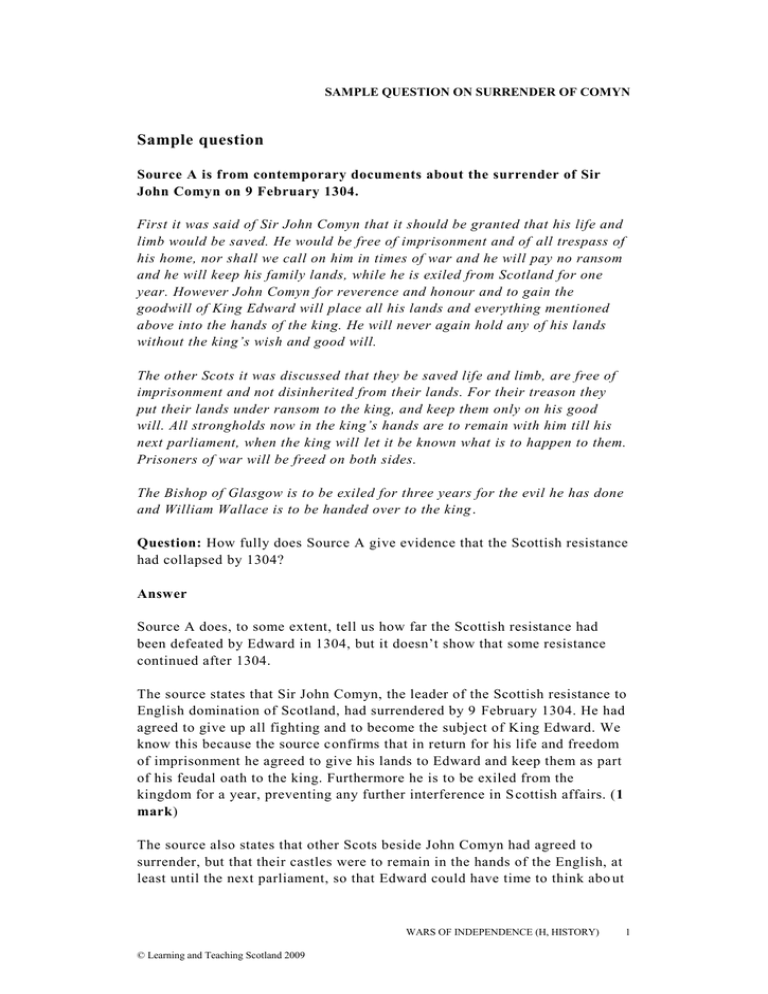
SAMPLE QUESTION ON SURRENDER OF COMYN Sample question Source A is from contemporary documents about the surrender of Sir John Comyn on 9 February 1304. First it was said of Sir John Comyn that it should be granted that his life and limb would be saved. He would be free of imprisonment and of all trespass of his home, nor shall we call on him in times of war and he will pay no ransom and he will keep his family lands, while he is exiled from Scotland for one year. However John Comyn for reverence and honour and to gain the goodwill of King Edward will place all his lands and everything mentioned above into the hands of the king. He will never again hold any of his lands without the king’s wish and good will. The other Scots it was discussed that they be saved life and limb, are free of imprisonment and not disinherited from their lands. For their treason they put their lands under ransom to the king, and keep them only on his good will. All strongholds now in the king’s hands are to remain with him till his next parliament, when the king will let it be known what is to happen to them. Prisoners of war will be freed on both sides. The Bishop of Glasgow is to be exiled for three years for the evil he has done and William Wallace is to be handed over to the king . Question: How fully does Source A give evidence that the Scottish resistance had collapsed by 1304? Answer Source A does, to some extent, tell us how far the Scottish resistance had been defeated by Edward in 1304, but it doesn’t show that some resistance continued after 1304. The source states that Sir John Comyn, the leader of the Scottish resistance to English domination of Scotland, had surrendered by 9 February 1304. He had agreed to give up all fighting and to become the subject of King Edward. We know this because the source confirms that in return for his life and freedom of imprisonment he agreed to give his lands to Edward and keep them as part of his feudal oath to the king. Furthermore he is to be exiled from the kingdom for a year, preventing any further interference in S cottish affairs. (1 mark) The source also states that other Scots beside John Comyn had agreed to surrender, but that their castles were to remain in the hands of the English, at least until the next parliament, so that Edward could have time to think abo ut WARS OF INDEPENDENCE (H, HISTORY) © Learning and Teaching Scotland 2009 1 SOURCE QUESTION ON RESISTANCE what to do with them. Without their castles to defend themselves it was very difficult for the Scots to wage any war on Edward, and he controlled their fortresses, making it easier for him to keep control of their lands. ( 1 mark) The source also states that the Bishop of Glasgow had been exiled from Scotland for at least three years. This was a blow to the cause for Scottish independence. Bishop Wishart was one of the strongest supporters of the Scottish resistance, and he had continually supported bo th Wallace and Comyn against Edward. (1 mark) Finally, the source confirms that not all of the resistance had surrendered to the English king. William Wallace was still at large and had not surrendered, and the Scots were ordered to hand him over to Edwar d for punishment. (1 mark) We can therefore see that the source gives a lot of detail about the defeat of the Scottish resistance in 1304. However, there are some important points it fails to mention. The source doesn’t point out that the years after Fal kirk were quite difficult for Edward. He had failed to crush the Scots forces in any important set piece battles, only small skirmishes like the attack on the river Cree in 1300. ( 1 mark) The war was also draining his financial resources, it was very exp ensive and there was little in the way of booty for the nobles that took part, primarily because Scotland was so poor. This meant the English nobles were losing patience with their king. (1 mark). Despite the loss of their king, the Scots had proved thems elves determined to fight on, their guardians working in the name of the king to great effect. The source also fails to mention that it was not Edward that had managed to force the surrender of the Scots forces, but the fact that they had come to realise that King John Balliol no longer wanted to return to rule them. So it can be argued that negotiation with Edward was now the best option. ( 1 mark) The source also doesn’t mention that William Wallace refused to give up and carried on the fight against Edward long after the surrender of the guardians. He led an unsuccessful attack on the English at the river Earn September 130, but was defeated and had to go on the run. ( 1 mark) He continued fighting his guerrilla war until he was betrayed and handed over to the English by Sir John Stewart of Mentieth in August 1305. ( 1 mark) 2 WARS OF INDEPENDENCE (H, HISTORY) © Learning and Teaching Scotland 2009 SAMPLE QUESTION ON SURRENDER OF COMYN Finally Robert Bruce had not given up his intention to become king. The loss of the Comyn faction to the fight and the failure of a Balliol return actually made his rebellion and continued resistance to English rule all the more likely. (1 mark) Robert had made a secret pact with the Scottish clergy to become king in the summer of 1304, even when he was supposedly on the side of Edward. Thus his intention was to carry on the struggle, p erhaps more secretly than before, but the Scottish resistance was still alive. ( 1 mark) Even John Comyn had not entirely given up, he had attested a series of secret meetings with Robert in 1305 and early 1306, although he later claimed that John betrayed these meetings to Edward. (1 mark) By 1306 Robert Bruce had himself crowned as king of Scots, and the Scottish resistance to Edward had started all over again. It is therefore hard to say that the source demonstrates Edward’s crushing of the Scottish resi stance because it continued long after his death. WARS OF INDEPENDENCE (H, HISTORY) © Learning and Teaching Scotland 2009 3
